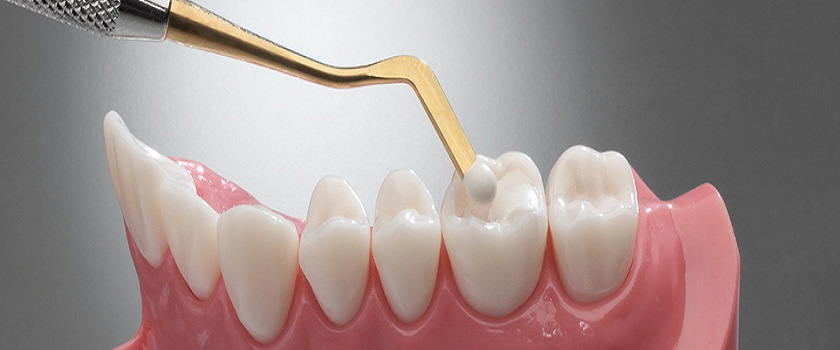What is Composite Filling
A composite (tooth colored) filling is used to repair a tooth that is affected by decay, cracks, fractures, etc. The decayed or affected portion of the tooth will be removed and then filled with a composite filling.
There are many types of filling materials available, each with their own advantages and disadvantages. You and Dr. Robinson can discuss the best options for restoring your teeth. Composite fillings are the most widely used today. Because composite fillings are tooth colored, they can be closely matched to the color of existing teeth, and are more aesthetically suited for use in front teeth or the more visible areas of the teeth.
As with most dental restorations, composite fillings are not permanent and may someday have to be replaced. They are very durable, and will last many years, giving you a long lasting, beautiful smile.
Reasons for composite fillings:
- Chipped teeth.
- Closing space between two teeth.
- Cracked or broken teeth.
- Decayed teeth.
- Worn teeth.
Mercury Fillings FAQ
Is There an Associated Health Risk?
Mercury is the most toxic, non-radioactive element on the earth. Most medical and scientific researchers have called for a ban on the use of mercury in all products. However, the potential harmful effects of mercury fillings have been ignored by the U.S. Government.
Due to its poisonous nature, mercury can adversely affect the immune, urinary, cardiac, respiratory and digestive systems. Under laboratory conditions, mercury had produced brain cell deterioration identical to that seen in victims of Alzheimer's disease.
Should I Have my Mercury Fillings Removed?
The IAOMT believes you should (unless you are pregnant or lactating). Mercury vapor is continuously emitted from dental fillings and accumulates in the body over time. The damaging effects of this exposure may not manifest for years or even decades. Studies repeatedly demonstrate that even low levels of mercury cause measurable adverse health effects. Mercury in the tissues of a fetus or infant correlates significantly with the number of dental amalgam fillings in the mother. Newborns may be at risk for learning disabilities because of mercury their mothers absorbed during pregnancy. Many physicians are testing their patients for mercury toxicity and referring them to biocompatible dentists. Across scientific disciplines, health professionals are realizing that mercury may adversely impact patient health.
that chronically ill patients seek advice from a physician knowledgeable in mercury toxicity issues.
The above is a reprinting of material from the IAOMT, which can be found at http: //www.iaomt.org
A composite (tooth colored) filling is used to repair a tooth that is affected by decay, cracks, fractures, etc.
How are composite fillings placed?
Composite fillings are usually placed in one appointment. While the tooth is numb, Dr. Robinson will remove decay as necessary. The space will then be thoroughly cleaned and carefully prepared before the new filling is placed. If the decay was near the nerve of the tooth, a special medication will be applied for added protection. The composite filling will then be precisely placed, shaped, and polished, restoring your tooth to its original shape and function.
It is normal to experience sensitivity to hot and cold when composite fillings are first placed, however this will subside shortly after your tooth acclimates to the new filling.
You will be given care instructions at the conclusion of your treatment. Good oral hygiene practices, eating habits, and regular dental visits will aid in the life of your new fillings.
Dr. Robinson recognizes the impact of toxic materials and relate it to dental and physiological health. Dr. Robinson is concerned with the integrity of the oral cavity and use materials and procedures in their practices that are systemically compatible.


